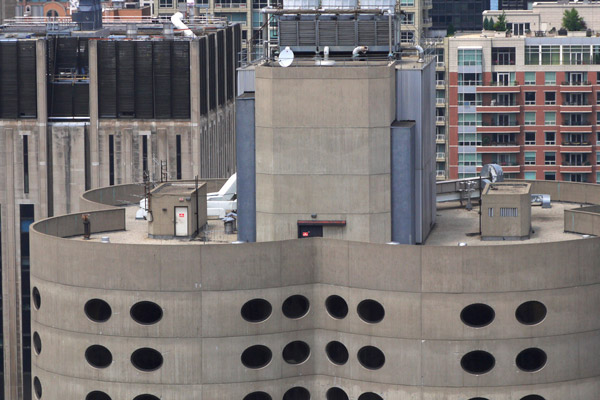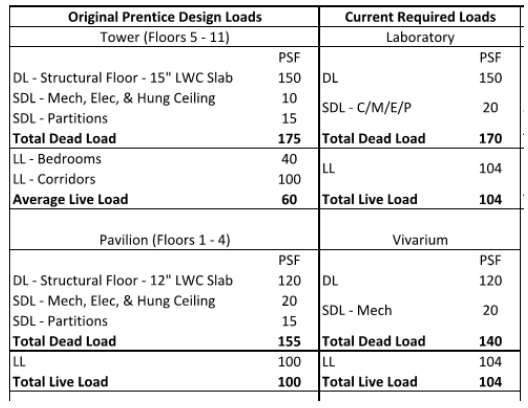
Northwestern may have the power and the money in the battle over Bertrand Goldberg's Prentice Hospital, but that will buy you only so much. The preservationists have on their side a host of prominent architects and the support of local architecture critics; Northwestern has responded with a flailing PR campaign, including an opaque poll conducted by a political PR firm:
[O]n the morning of the commission meeting, Northwestern revealed that it had surveyed the public and found "overwhelming support" for its plan to build a new medical center on the Prentice site. According to NU spokesman Alan K. Cubbage, "after hearing arguments from both sides," 72 percent of Chicago residents "said they favored the new building."
[snip]
As NU no doubt teaches in Statistics 101, it would be critical to know how the "arguments" were presented, but Cubbage said the university isn't releasing any information other than what he's provided. That consists of the following "key findings":
* 84 percent agree with the statement "Creating new, high quality research jobs is an important part of keeping Chicago's economy strong and growing in the 21st century."
* 78 percent agree (50 percent strongly agree) with the statement: “Chicagoans will benefit from the enhanced research center as more clinicians will be available to provide care to the community.”
And so forth. Why is Northwestern up against the wall? Lynn Becker makes an underappreciated point:
I respect the judgement of people like Jeanne Gang and John Ronan, David Woodhouse and Jack Hartray, and their colleages, because, unlike Northwestern, they have a proven track record of serving their clients while adding to the cultural capital of the city. Northwestern knows only how to destroy and replace, with the kind of faceless mediocrity that sucks all the air out of the very idea of inviting, liveable urban space.
[snip]
I'm sure you've walked the streets of the [downtown] Northwestern campus. They're a depressing place, one anonymous building after another, often with dead-windowed walls facing the sidewalks. It's a good thing most people being rushed to Northwestern are looking up at the ambulance ceiling, because the view of the unrelenting drabness out their window might convince them life wasn't really worth living, after all.
If you think he's exaggerating, take a look at his pictures, or a Google Street View spin around the new Prentice. Folks like Michael Miner (and myself) have noted that Prentice—especially compared to Goldberg's nearby buildings, even the Hilliard Homes—is hard to love, even if we should love it. But we're not just evaluating Prentice, we're evaluating future uses for that spot, and the buildings around it suggest that even if you're not a big fan of Prentice, it could easily get worse. Goldberg's Prentice may not be pretty, but it has some life to it.
What I haven't seen addressed much, however, is Prentice as a structure: not the aesthetics, but the building as a tool. The National Trust for Historic Preservation called it "infinitely adaptable," and Landmarks Illinois has published a widely cited plan for reusing the building (PDF). But it doesn't address two unsexy issues raised in Northwestern's reuse study (PDF): floor load and floor vibration.

A live load (basically, things a floor has to support that aren't fixed, including but not limited to people) of 40 psf is acceptable for hospital patient rooms (PDF; PDF), but it's beneath standards for laboratories. 104 PSF is what's cited by the NIH as its guidelines for laboratories, and depending on the use it can be more than that; equipment imaging spaces require a live design load of twice the standard for laboratories.
As far as floor vibration, Northwestern's report found:
According to the NIH guidelines, “The structural system shall be stiff to the extent that any transmitted vibration occurs at high frequencies, as these are more easily dampened with instrumentation vibration dampening systems and isolation tables than vibrations occurring at lower frequencies. “ The NIH recommended maximum value for General Laboratory occupancies is approximately 2000 in/sec. This is the same as a Vibration Criteria (VC-A). Animal research facilities such as the vivarium area have a recommended value of 4000 μin/sec. However many laboratory planners recommend using 2000 μin/sec.
[snip]
[T]he maximum anticipated vibration velocity due to a moderate walking pace of 75 steps/minute exceeds the 2000 μin/sec limit for laboratories [in Prentice].
If the floors in a biomedical research lab vibrate too much, it's no joke. The NIH ran into a problem a few years ago where shoddy construction threatened to derail an expensive new long-term lease:
The 10-story building vibrates, particularly in its upper floors. Now, as engineers try once again to sort out the problem, questions remain about whether highly sensitive scientific research can ever be performed in the structure.
[snip]
Records obtained by The Times show that some NIH scientists are concerned that the vibration issue is more serious than Zerhouni has acknowledged. In a Feb. 21 e-mail to NIH officials, a California consultant hired to examine the issue concluded that the building's floors were not stiff enough, causing vibrations that would interfere with basic research equipment.
Floor stiffness was a key topic at a March 13 meeting among NIH scientists, engineers and outside consultants. Some researchers warned that vibrations caused by people simply walking down corridors or within laboratories could disrupt ongoing projects. The researchers discussed establishing walking speed limits to minimize shaking.
Several at the meeting noted that some earlier landmark projects — such as research that led to development of medicated stents for heart patients — could not have been conducted in a vibrating building.
"At this point," one researcher stated, "you just can't place tissue culture anywhere" in the new building.
"You are correct," an NIH official and a consultant responded, according to the minutes.
Northwestern's report does come with caveats: "The drawings used for this study are design documents from nearly 40 years ago and do not include field modifications such as the fifth floor addition, or as-built information. Any modifications that may have been made over the years have not been considered in this study. The material properties and dimensions per the design documents were the basis of this study and have not been verified with testing or site measurements." Whether or not as-built information or modifications would change the conclusions, the future of Prentice will come down to more than aesthetic reactions.
Photograph: smaedli (CC by 2.0)


